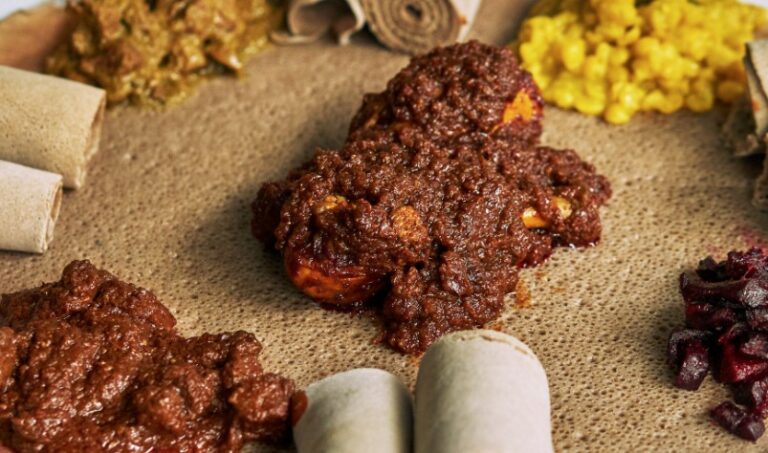Introduction: Ethiopian Cuisine and Veganism
Ethiopian cuisine is known for its unique blend of spices and flavors, as well as its communal style of eating with injera, a spongy sourdough flatbread. Many traditional Ethiopian dishes feature meat, but the cuisine is also rich in vegan options. Veganism is a growing trend around the world, with many people choosing to follow a plant-based diet for various reasons, including environmental and ethical concerns. In this article, we will explore the various Ethiopian dishes that are suitable for vegans.
Injera: The Staple Food of Ethiopia
Injera is a sourdough flatbread that is the staple food of Ethiopia and is central to its cuisine. It is made from teff flour, a gluten-free grain that is native to Ethiopia. Injera is usually served with vegan-friendly vegetable stews, such as shiro or misir wot, which are made with lentils, chickpeas, or split peas. Injera is also used as a utensil to scoop up the stews, making for a fun and communal eating experience.
Vegan-Friendly Vegetable Stews
Ethiopian cuisine features a wide variety of vegetable stews that are perfect for vegans. Shiro, for example, is a spicy stew made from ground chickpeas, lentils, or peas, while misir wot is made from red split lentils and berbere spice mix. These stews are usually served with injera and are a great way to try out the distinct Ethiopian spices and flavors.
Lentil-based Dishes in Ethiopian Cuisine
Lentils are a staple ingredient in Ethiopian cuisine and are used in various dishes. Kik alicha, for example, is a mild lentil stew that is perfect for vegans. It is made with split yellow lentils, garlic, ginger, and turmeric. Another classic dish is yemisir kik wot, a spicy lentil stew that is made with red lentils and berbere spice mix. Lentils are a great source of protein for vegans, making these dishes not only tasty but also nutritious.
Spice Up Your Vegan Meal with Berbere
Berbere is a spice blend that is central to Ethiopian cuisine. It is a blend of various spices, including chili peppers, ginger, garlic, and fenugreek, among others. Berbere is used to add flavor and heat to Ethiopian dishes, making them more exciting and aromatic. Vegans can enjoy berbere-spiced stews and lentil dishes, as well as using the spice blend as a seasoning for vegetables or tofu dishes.
Niter Kibbeh: The Ethiopian Vegan Butter
Niter kibbeh is a spiced clarified butter that is used in various Ethiopian dishes. It is made from vegan-friendly ingredients, such as vegetable oil, garlic, ginger, and spices. Niter kibbeh adds a unique flavor and fragrance to dishes, and is perfect for sautéing vegetables or tofu. Vegans can enjoy the distinct taste of niter kibbeh without any animal products.
Vegan-Friendly Snacks and Side Dishes
Ethiopian cuisine features a variety of vegan-friendly snacks and side dishes. One example is kolo, which is a crunchy snack made from roasted barley or chickpeas. Another popular side dish is gomen, which is a sautéed collard greens dish that is seasoned with spices and garlic. These dishes are a great way to try out Ethiopian flavors and spices without committing to a full meal.
Conclusion: Ethiopian Cuisine Has Options for Vegans!
Ethiopian cuisine is rich in vegan-friendly options, from the staple injera bread to the various vegetable stews and lentil dishes. Vegans can also enjoy the distinct flavors of berbere spice mix and niter kibbeh vegan butter. Ethiopian snacks and side dishes are also a great way to try out the cuisine without any animal products. Ethiopian cuisine is a great option for vegans looking to try out new and exciting flavors and spices.

